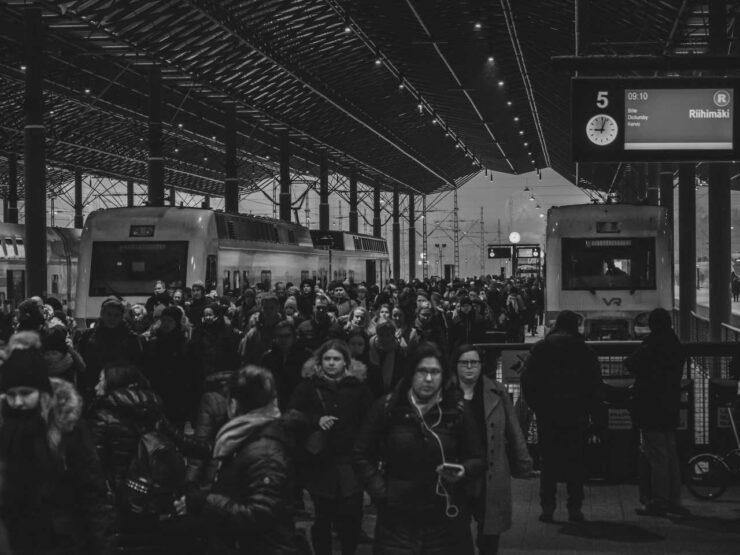Article project: Principle of Non-Punishment, Victim-Offenders, and Evidence

I presented ongoing research during the NSfK Research Seminar in Hämeenlinna (8.–10.5.2023). In this co-authored article with Heini Kainulainen, we study the principle of non-punishment from the perspective of evidence. The article is based on expert interviews (N 20) we conducted for a previous study (Hannonen – Kainulainen 2022).
According to the principle of non-punishment, trafficking victims shouldn’t be punished for offenses they have been compelled to commit. In these cases, a trafficking victim is simultaneously a victim and an offender (victim-offender) which causes difficulties in the criminal procedure. Especially, the lines between victimhood and participating in pandering or human trafficking are blurry.
A preliminary finding of our research is that the role of the pre-trial investigation authority is crucial in deciding the direction the case goes. If the victim-offender’s situation is not recognized in the pre-trial investigation, the principle of non-punishment cannot be applied properly because no evidence has been gathered to back the victim-offender’s claims. In the worst scenario, these victim-offenders are sentenced to punishment, deported, and their exploitation is allowed to continue.
What do trains and luggage have to do with the criminal procedure?
In our interview material, quite a few of the interviewed professionals used train-related metaphors when referring to the criminal procedure:
“The train was going very fast at that point…”
“The train had gone already.”
“The train had already gone too far.”
I was pondering these quotes on my way to the NSfK Research Seminar (by train of course). In this blog post, I venture to develop this train metaphor a bit further.
The pre-trial investigation is a part of the criminal procedure where a complex real-life situation is investigated and molded into a legal form. The pre-trial investigation begins with bits of uncertain information and (ideally) ends up with a coherent picture of legally relevant facts.
The starting point is somewhat similar to a crowded train station where people are hurriedly swarming in all directions. Nobody knows to which train or destination the people are going just by looking at them. In the end, all the passengers should find the right train and have all their luggage with them.

The train station staff and the conductor have different responsibilities
In this metaphor, passengers represent people involved in the criminal procedure and luggage represents evidence that the parties may be able to provide. The pre-trial investigation authority operates with this kind of messy reality and is tasked with guiding the passengers with their luggage to the right trains. Just like the staff at the train station, the pre-trial investigation authority cannot completely control the chaos, but they may help the passengers find the right train by giving instructions, making announcements on the loudspeaker, and setting clear signs at the train station.
In this metaphor, the prosecutor is the train conductor who ensures a smooth trip on the train which represents the criminal case. The conductor guides the passengers to their designated seats that represent the criminal procedural roles of defendant, plaintiff, or witness. Just like a prosecutor in a criminal case, the conductor operates only with the passengers and luggage that managed to get to the train. Some passengers (a possible party or a witness) may not have found the right train and some luggage (evidence) may have been left at the train station. However, the train cannot stop and go back for them. Therefore, the conductor’s job gets much more difficult if the train station doesn’t function properly.
The staff at the train station functions as a gatekeeper in ensuring who gets on the train and with which bundle of luggage. To control the chaos of the train station, it might be necessary for the train station staff and the conductor to discuss the passengers, their luggage, and their placement on the train in advance. Likewise, the cooperation between the pre-trial investigation authority and the prosecution is of paramount importance in ensuring a smooth journey to justice.

References
Hannonen, Jani & Kainulainen, Heini: Ihmiskaupan uhrien rankaisemattomuusperiaate. Publications of the Ministry of Justice, Reports and guidelines 2022:8. (In Finnish with an abstract in English and Swedish.) Available: https://julkaisut.valtioneuvosto.fi/handle/10024/164314
Jani Hannonen is a doctoral researcher at the University of Turku (Finland). His research interests are criminal law and human trafficking. He is currently writing an article-based Ph.D. thesis on the Principle of Non-Punishment of Victims of Human Trafficking. Email: jsshan@utu.fi.
